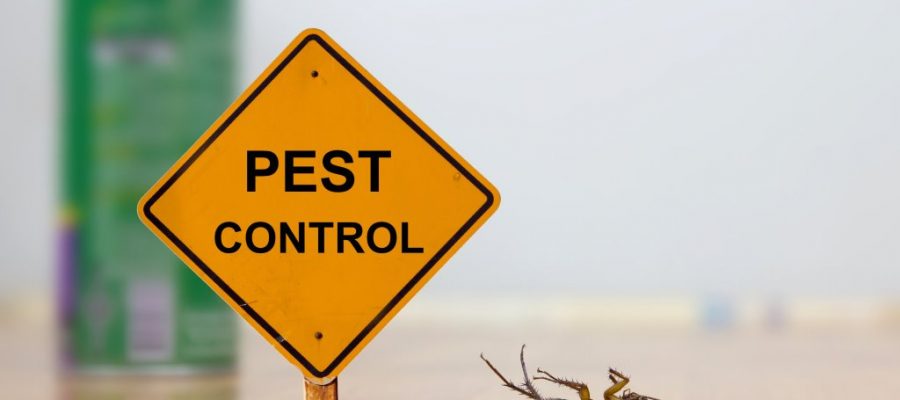Comprehensive Rodent Control Coquitlam Services for Peace of Mind
Wiki Article
Safe and Trusted Bug Control for Lasting Defense
Effective pest management needs a diverse technique that stabilizes ecological honesty with the requirement for effective pest reductions. The subtleties of these approaches might not be quickly clear, prompting a better assessment of the techniques that can lead to lasting parasite control end results.Understanding Pest Control Approaches
Parasite control incorporates a range of techniques targeted at managing and eradicating undesirable pests and rodents that can endanger both wellness and residential or commercial property. Understanding these approaches is crucial for reliable bug administration.
The main categories of parasite control techniques include mechanical, organic, and chemical methods. Mechanical methods entail physical barriers and catches to avoid insect entry and capture unwanted types. For instance, making use of screens on home windows or utilizing sticky traps can dramatically minimize pest populaces without introducing dangerous compounds.

Chemical insect control is commonly the most recognized technique, making use of chemicals to eliminate insects. These chemicals can be efficient yet must be used with caution to prevent negative results on non-target varieties and the setting.
Benefits of Eco-Friendly Solutions
Just how can green options transform pest control techniques? The fostering of eco-friendly insect control techniques offers numerous advantages, substantially enhancing the performance and security of pest monitoring.
One more advantage is the favorable impact on regional biodiversity. Green services are created to target specific parasites while protecting valuable insects and wildlife, promoting a well balanced ecosystem. This method aligns with the expanding customer need for lasting practices, enhancing the track record of bug control providers.
Integrated Parasite Monitoring Techniques
The execution of eco-friendly services normally brings about the fostering of Integrated Pest Management (IPM) strategies, which even more improve pest control effectiveness. IPM is an alternative method that integrates several techniques to handle pest populations while reducing environmental impact. This strategy emphasizes making use of organic, cultural, mechanical, and chemical controls, making sure a well balanced and sustainable approach of parasite administration.One fundamental aspect of IPM is the comprehensive assessment of parasite task and environmental conditions. By keeping track of pest populations and recognizing their life process, specialists can execute targeted interventions that interrupt the bug's habitat or lifecycle, reducing dependence on chemical pesticides. Furthermore, cultural link techniques such as crop turning and habitat manipulation can significantly lessen bug establishment and recreation.
An additional essential element is making use of organic control agents, such as beneficial pests or microbes, which can normally suppress parasite populations. When chemical applications are essential, IPM prioritizes the usage of low-risk pesticides and uses them precisely, minimizing direct exposure to non-target organisms and people.
Incorporating IPM methods not just improves bug control effectiveness however also promotes a safer environment, aligning with the expanding need for sustainable techniques in pest management.
Safe Practices for Home Owners
Understanding the value of safe methods in parasite control can empower home owners to effectively handle parasite issues while protecting their wellness and the environment. Executing safe techniques and safety nets is essential in reducing direct exposure to harmful chemicals.House owners need to initially analyze their setting for problems that draw in bugs, such as standing food, clutter, and water waste. Routinely cleaning and sealing access factors can prevent parasites from attacking the home. Making use of all-natural deterrents, such as vital oils or diatomaceous earth, can provide effective choices to chemical pesticides.
When chemical therapies are required, property owners should choose items that are particularly labeled as safe for domestic use. It is important to adhere to application standards carefully to stay clear of too much exposure. Additionally, using targeted treatments in locations where insects are identified, instead of blanket splashing, can dramatically reduce chemical usage.
Lastly, keeping open communication with parasite control experts is important. Homeowners must ask about the safety and security of products made use of and request environment-friendly choices whenever feasible. By adopting these secure methods, property owners can create a much healthier living atmosphere while properly managing bug issues.

Tips for Long-Term Protection
Establishing a parasite management technique that stresses lasting protection can considerably boost the effectiveness of the risk-free techniques formerly discussed. To accomplish this, property owners must implement regular evaluations of their building, do i need termite treatment concentrating on hidden areas such as attics, cellars, and crawl spaces. Early detection of insect task is critical in preventing infestations from taking hold.These methods reduce attractants that draw parasites right into the home. Sealing entrance points, such as splits around windows and doors, can properly obstruct prospective pest accessibility.
Landscape design must likewise be considered; maintaining plants cut and maintaining a look at here range in between plant life and the home lessens hiding spots for parasites. Using all-natural deterrents, such as crucial oils or diatomaceous planet, can further dissuade infestations without considering severe chemicals.
Lastly, teaming up with a professional parasite control service for periodic examinations can provide an added layer of safety and security. These specialists can use customized suggestions and progressed treatments, making certain that your home remains shielded against parasites in the long term.
Verdict
Finally, dependable and secure pest control needs a complex method that stresses environmentally friendly approaches and incorporated pest administration. By applying natural deterrents, carrying out normal inspections, and preserving appropriate sanitation, property owners can dramatically reduce insect populations while securing beneficial insects and the setting. Cooperation with specialist insect control solutions boosts the effectiveness of these techniques, making sure customized remedies that provide lasting protection and comfort against future invasions.Efficient bug administration needs a diverse technique that stabilizes eco-friendly honesty with the demand for reliable parasite suppression. The adoption of environmentally friendly insect control techniques provides various benefits, significantly enhancing the efficiency and security of bug administration.The application of environmentally friendly solutions naturally leads to the fostering of Integrated Bug Management (IPM) strategies, which better boost bug control effectiveness. exterminator coquitlam. By keeping an eye on insect populations and recognizing their life cycles, experts can apply targeted treatments that disrupt the pest's environment or lifecycle, minimizing reliance on chemical pesticides.In verdict, trusted and risk-free insect control calls for a diverse method that stresses environment-friendly techniques and incorporated insect monitoring
Report this wiki page